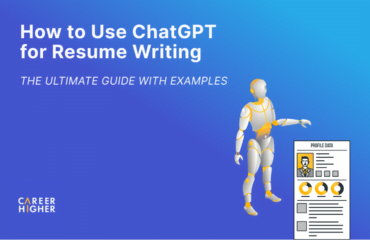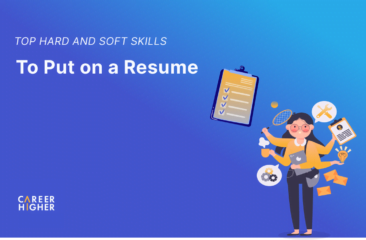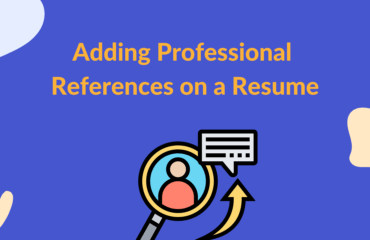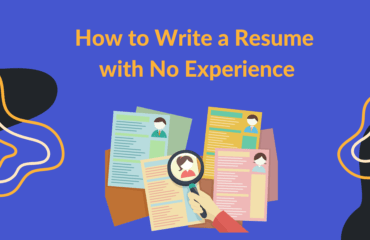Table of Contents
A good resume is the key to landing your dream job. It is the foundation of your professional brand and an essential marketing tool for your job search journey. How you market your qualifications on your resume, in combination with smart job search strategies, will determine the success of your application; if you’re wondering how, keep on reading. We will share some resume writing tips to help you maximize your chances of securing your dream role.
1) Tailor your resume based on your target job
You put your heart and soul into building your career and developing your skills. It’s only natural for you to want to show all your accomplishments and expertise to the world. After all, you worked hard for it. But think it through. Is your goal to show everything you know or captivate the attention of your prospective employer? We’re guessing your answer is the latter. If so, submitting a generic resume won’t do the job.
Instead of focusing on detailing everything you know, concentrate on addressing the requirements of your desired job. Creating a resume that is laser-focused on the job will allow you to communicate your qualifications in a way that appeals directly to your prospective employers. This means including relevant keywords from the job description and information from your background based on what the role requires. Everything else is just “noise” and must be excluded from your resume.
For example, you are an entrepreneur seeking a business development executive position. Rather than broadly showcasing your business management expertise, it will be wiser to focus on the relevant business development skills you have developed. This will make your application more appealing to decision-makers, which will be beneficial for your candidacy.
2) Quantify results and achievements
When it comes to resume writing, numbers speak louder than words. If you are a product management professional, you can say you are the best at developing and managing products. But if you don’t have the facts and figures to back it up, then your claim becomes fictitious and unimpressive. As they say, “show, don’t tell.” Rather than saying that you are the best candidate for the job, show it by focusing on the results you achieved.
Are you confident you have what it takes to do the job? Don’t tell decision-makers, show them. Instead of saying you have helped your previous employer improve their product, specify the increase in revenue that was generated as a result of your efforts. This gives decision-makers a clearer picture of your capabilities and the impact you’ve made in your previous roles. In order for you to stand out from the competition, make numbers your friend.
One of the most effective ways to showcase your accomplishments is by using the STAR (Situation, Task, Action, Result) format in writing content. This approach uses a brief professional storytelling structure that includes your main task, the key steps you took to accomplish the job, and the quantitative outcome of your work. To give you an idea of how it’s done in practice, let’s take a look at the example below.
“Headed ongoing product improvements; tracked and monitored performance metrics and functionality after launch; adapted and improved product features based on customer feedback and business metrics; increased ROI by 300%+ since launch”
3) Use bold fonts sparingly to emphasize key successes
It’s no secret that recruiters only spend a few seconds reviewing resumes. More specifically, a study done by Ladders revealed that it only takes 7.4 seconds for recruiters to make a decision about a candidate’s qualifications. Unless the recruiter is a robot, it would be impossible to scan through every single detail on the resume within that time limit. To ensure recruiters won’t miss key information, we recommend using bold fonts to highlight your relevant successes.
As with anything in life, too much of something can be bad for you. The same thing applies when using bold fonts to emphasize your key accomplishments. It should be used no more than five to seven times in the whole document. Anything more than that can do more harm than good. If you’re wondering how it’s done, see the example below.
4) Avoid unnecessary graphics
When you apply through online job platforms, your resume will be prescreened by an Applicant Tracking System (ATS). It will convert your document into a searchable text version, stripping away its design elements. As a result, your resume may not be read and processed correctly. To avoid this from happening, we suggest sticking with best practices. Avoid fancy gimmicks like graphics.
Keep in mind that the objective of your resume is to convince ATS and human decision-makers that you are a strong candidate for the job. The best way to achieve this is by presenting a resume that focuses on maximizing readability and accessibility for both humans and ATS. A less is more approach is the best way to go when it comes to resume format, layout, and structure.
5) Use active verbs to describe responsibilities
Active verbs are also known as action or dynamic verbs. These are used to describe what the subject of the sentence is actively doing. For example, accelerate, pioneer, orchestrate, spearhead, and oversee are all examples of active verbs. Using these enhances the quality of your resume by helping you focus on the actions that led to your accomplishments. This is what decision-makers would want to see.
Additionally, active verbs showcase control because they convey that you are directly performing the actual task. However, not all active verbs are equal. There are overused, generic active verbs that don’t provide clarity. Some examples include participated, assisted, and took part. These verbs don’t clearly communicate your actions and leave the “how” question unanswered.
Rather than writing, “participated in a digital transformation project”, say “facilitated CRM implementation to support digital transformation project”. The second example demonstrates that you were in control and provides more clarity on your actual responsibilities. As a rule of thumb, be as specific as possible when describing the actions you’ve taken to perform your duties and achieve the desired results. This will make your resume punchier and more notable.
6) Consider professional resume writing services
Surely, most candidates can write a resume. However, writing a best-practice resume that would allow them to put their best foot forward and land their dream job is a different story. It can be a frustrating process, especially if writing is not your cup of tea. This is when professional resume writing services can come in handy. Here are some signs it might be time for you to consider investing in such services.
- You find it challenging to write and sell your qualifications to prospective employers.
- You applied to the right opportunities but barely got interviews.
- ATS optimization sounds intimidating to you.
- You don’t know how to address short job tenure and long employment gaps in the best light possible.
- You are looking to change careers.
Before you get your hopes too high, keep in mind that resume writing services don’t work like magic. Investing in such services won’t automatically guarantee you an interview. However, these services, in combination with smart job search strategies, can help you maximize your chances of landing your dream job.
When you say dream job, it can literally sound like a dream that’s unattainable. But with the right strategy, planning, and preparation, you will eventually get there. It all starts with good resume writing. By following the tips outlined above, you should be able to write an interview-winning resume to land your dream role. If you need support in creating one, we are here to help.











